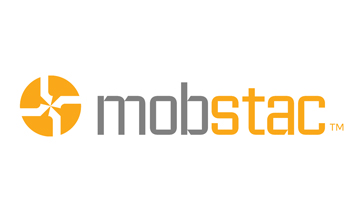India's Mobstac helps drive content across wider mobile audience

"Mobile is considered the first and most important screen by nearly half of the 18- to 34-year-old demographic," states a research conducted by Weve as mentioned in Mediaweek. What's interesting to know is that the finding placed mobile ahead of laptops or PCs (chosen by 30.6 percent) and way ahead of TV (12.4 percent) as the first and most important screen in the lives of people between the ages of 18 and 34. Of course, you may say that this is a sample size of a particular demographic, but if you compare consumer behaviour with that of the people more than a few years ago, you'd be remarkably surprised at the various differences you would find.
The mobile web. Who would have thought it would be the revolution of the future? Well, considering its rapid growth, especially with a lot of existing technologies drifting towards mobile and the growth of smartphones across the world being as poignant as ever, it's hardly a surprise that a lot of businesses are considering mobile strategy to be on the top of their agenda. Yes, this isn't something that is cataclysmal or has just sprouted out of the blue. The future was already set to go mobile years ago, but the real diversification of how the internet and web has transformed towards the peak in mobile content and mobile web is certainly a mark of progress for a lot in that field. And having realized this aspect earlier on and capitalizing it has always been helpful across the world.

One such startup that took this opportunity is from Bangalore, called Mobstac, which was started in 2009. The co-founders, Ravi Pratap and Sharat Potharaju, were living in the US until then, and always wanted to be entrepreneurs. With the launch of an iPhone in 2007, it was very clear that the prime time for mobile web was around the corner, particularly in developing countries like India. They were sure the promise of the internet would be delivered via the mobile phone. Despite the disruptive nature of the mobile revolution, there were fundamental challenges focused on mobile development and the diversity of mobile devices in the market. MobStac was started with the objective of helping publishers build mobile sites with ease that can work seamlessly across every mobile device out there.
MobStac is a startup that deals with mobile back end as a service (MBaaS) for publishers and businesses, which helps them build engaging, responsive sites and native apps. Its cloud-based platform plays the role of the server, helping its customers build mobile sites and native apps with absolute ease. It has inbuilt integration with social media, advertising networks/servers, third-party data sources, CRM, etc. Businesses are able to get engaging mobile assets to market at a fraction of the cost, and very fast, as well.
Mobile adoption is still in its early stages globally, but there are quite a few MBaaS players in the market either creating responsive mobile sites or native mobile apps. However, according to Sharat, its cloud-based publishing platform creates an end-to-end mobile web presence and builds native apps packed with extensive features at a fraction of the cost and time. Once hosted on its platform, mobile websites and apps automatically enjoy all of its platform features upgrades.
Its target audience comprises of three key customer personas:
Publishers
Businesses
Mobile/web developers
Read this
It has a marquee publisher base in India that includes The Hindu, Deccan Herald, Outlook India, India TV News, and Times Internet, to name a few. With its global publisher base growing steadily and quite a few inbound interests from businesses, they are creating a road map to grow in that direction, said Potharaju.
He also added that most of its marketing efforts are focused on educating potential clients and building thought leadership. Most of our clients come to us searching for information on mobile and related topics.
"We offer a lot of educational whitepapers, best practices, infographics, and also host live webinars where our product team takes questions from attendees directly. We've adopted a consultative approach right from the beginning, and that seems to be working for us," mentioned Sharat.
The platform has served mobile pages in more than 12 languages across 40 countries. Its clients are news and content publishers, magazines, content aggregation sites, online television channels, and corporate Web sites.
The co-founders feel that some of the startup's engaging and key features that help it be successful are:
Engaging responsive sites that work across every mobile and tablet device; have one URL, no mdots required
With a ready server-side, it is able to accelerate time to market much better
Blazing-fast page loads in terms of payload optimization and CDN integration
Future-ready sites that will automatically support every OS update and new device launch
Mobile SEO-ready to improve mobile organic traffic. Fully compliant with Google mobile SEO guidelines
Integration with GA and other analytics platforms to give an accurate breakdown of traction across devices/geography, etc
Supporting rich media content such as videos and images optimized for every device automatically to deliver the best mobile experiences
Backward integration with CMS and inbuilt integration with ad servers/ad networks to drive monetization
Integration with every CRM, like Hubspot, Zoho, and Marketo, to capture mobile leads and associated intelligence data
MobStac was initially funded by the founders and angel investors from IITM alumni. Following that in 2011, it raised an institutional round of funding from Accel partners and Mumbai Angels. It is looking to expand its market to North America, which certainly seems to be a mature market. What I'd like to also see is how it divulges into a much more non-saturated emerging market. Obviously right now, the penetration and conversion is much more in the developed market, but long-term growth is something that it can tap out of emerging economies.
What do you think?